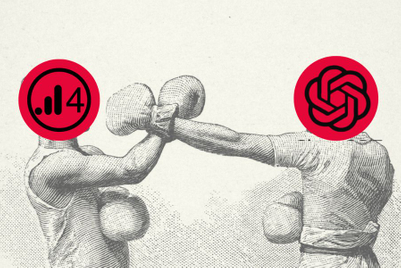
Few would argue with Peter Drucker’s famous line that “if you can measure it, you can manage it”.
In programmatic, however, things aren’t proving so simple. While campaigns are certainly being measured, questions are increasingly being asked about how they are being measured, and whether the current industry standard metrics are really a sound basis for understanding campaign performance.
Our own research recently found that measurement was the main challenge for two-thirds of advertisers in digital marketing (66%), and that nearly all advertisers (90%) could justify additional investment in programmatic if they had access to better measurement. No wonder senior industry figures, such as P&G chief brand officer Marc Pritchard, are demanding improvement.
Metrics that matter
For too long, agencies and brands haven’t focused on what campaigns are really trying to achieve. Instead of drilling down to metrics that matter—those that deliver real business results—there has been a misplaced focus on traditional post-click and post-impressions measurement models.
Realising the true potential of programmatic demands recognition that this form of measurement is flawed. It also demands a full understanding of why these metrics are resulting in so many millions being wasted through low-quality advertising.
Causal relationship
Our research found that over half (56%) of marketers consider clicks their most important metric. This comes despite the fact that number of clicks often doesn’t even correlate with increased sales, let alone prove a causal relationship. It may once have been a useful indicator to show how audiences responded to ads but it doesn’t belong in the programmatic age.
Today, programmatic allows you to track people far more accurately than ever before and, depending on the platform, offers a variety of ways to measure the behaviour of internet users, beyond simply whether or not they have seen an ad.
Measuring what matters—such as a campaign’s ability to boost conversions or brand affinity—requires metrics with the potential to demonstrate a causal relationship to these goals. Getting this right enables brands to exploit the unparalleled benefits of programmatic to improve campaign performance, offering almost real-time insight into which aspects—such as creative, targeting and seasonality—are generating the results brands want to achieve.
Campaign analysis is critical to highlighting the key customer behaviours that correlate to online sales, such as the time a user spends on a site. Having identified this behaviour, strategies can then be optimised to drive traffic among users spending a longer time on site instead of looking at simple site visits.
Conversions over clicks
There are further downsides to relying on flawed metrics such as number of clicks. Ultimately, businesses want conversions, but an emphasis on clicks means brands are simply incentivising their agencies to focus on cheap inventory, which is susceptible to click fraud.
They’re also at risk of targeting consumers with a propensity to click on ads accidentally. While not fraudulent, accidental clicks do nothing to boost conversions. In fact, we conducted a study which revealed that high-probability clickers were 20% less likely to convert than average, which means brands could probably improve their campaign performance by excluding high-probability clickers—all in the context of the fact that the industry’s main metric for judging success encourages the opposite behaviour.
Incremental measurement
Adopting a different approach to measurement can enable brands to gain real insight into whether a campaign is driving genuine return on investment. One such example is incremental measurement.
Because any campaign is likely to involve a certain number of non-viewable impressions, these can be used to create a control group of consumers. Comparing the behaviour of users who viewed the ad over those who didn’t helps identify results that were genuinely driven by the campaign, rather than conversions that would have happened anyway.
Unlocking investment
However, agencies taking the easy option of buying cheap inventory might not be keen to move to such a model as it could potentially demonstrate that their campaigns are doing little to boost conversions.
Brands, therefore, face the challenge of building enough understanding of programmatic within the business to encourage moves away from more familiar measurement methods and towards measurement that can better determine the true impact of programmatic spend.
Agencies that can help them solve this problem have the potential to unlock more investment and prove their value on one of the most pressing digital marketing challenges facing advertisers right now.
Rachael Morris is Director of optimisation and insight at Infectious Media.







.png&h=334&w=500&q=100&v=20250320&c=1)
.jpg&h=334&w=500&q=100&v=20250320&c=1)
.jpg&h=334&w=500&q=100&v=20250320&c=1)


.jpg&h=334&w=500&q=100&v=20250320&c=1)







